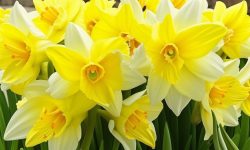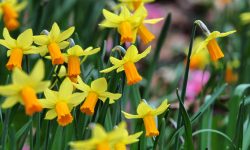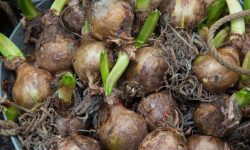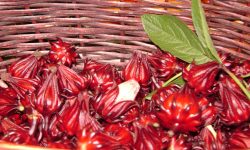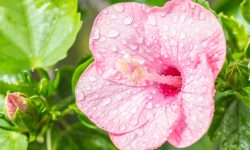Daffodils are among the first signs of spring, bursting through the soil with their golden trumpets that brighten even the gloomiest days. But behind those dazzling blooms lies a secret every gardener must know — timing. Fertilizing daffodils at the right moment can mean the difference between a few scattered flowers and a full, vibrant display that lasts for weeks. Many people feed them too late or too early, missing the window when nutrients matter most.
Understanding when to fertilize daffodils allows you to strengthen the bulbs, promote healthier foliage, and ensure next year’s bloom is even better. The process may seem simple, but timing, soil condition, and fertilizer choice all play key roles. This guide will take you step-by-step through everything you need to know, from the ideal feeding schedule to seasonal care tips that bring out the best in your daffodils year after year.
Understanding Daffodil Growth Stages
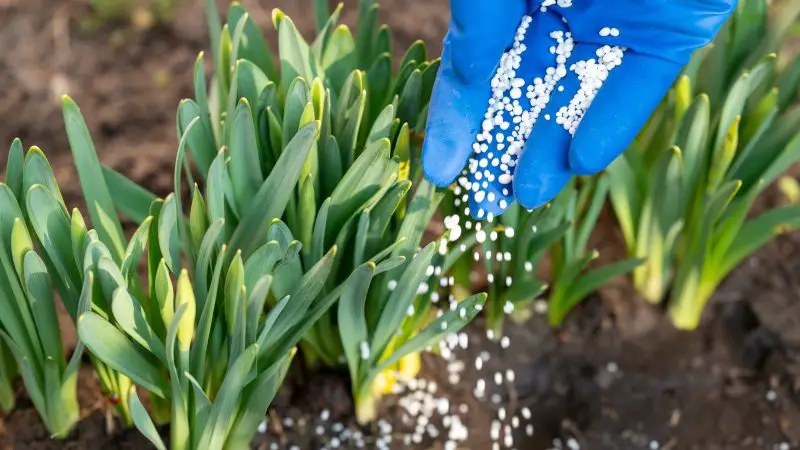
To know when to fertilize daffodils, you first need to understand their complete growth cycle from root formation to dormancy. Daffodils are hardy perennial bulbs that follow a natural rhythm of growth, flowering, and rest every year. Each stage requires a different balance of nutrients, and recognizing these phases helps determine the best fertilizing time. The cycle begins in autumn when the bulb quietly establishes roots beneath the soil. During this unseen stage, the plant absorbs nutrients and moisture to prepare for winter. Although there are no leaves yet, this root activity is essential for early spring growth and successful blooming.
When the weather warms in late winter or early spring, daffodil shoots break through the surface and begin forming green leaves. This is the period of most active growth when photosynthesis powers the creation of buds inside the bulb. Fertilization during early growth gives the plant strength to produce larger flowers with strong, upright stems. After the blooms fade, the leaves remain the key to next year’s success. They continue absorbing sunlight, converting it into energy, and sending stored carbohydrates back into the bulb. Gardeners who remove foliage too early stop this energy transfer, leading to weaker bulbs the following season.
By late spring, the leaves naturally start to yellow and die back, signaling the beginning of dormancy. The plant now withdraws its energy underground, conserving strength for the next year’s growth. Fertilizing after this stage has little benefit because root activity slows dramatically. Understanding this full life cycle allows gardeners to apply nutrients with precision, building healthier bulbs, fuller leaves, and more radiant blooms every season.
The Best Time to Fertilize Daffodils
Fertilizing daffodils at the correct time can dramatically improve both the number and quality of blooms. The best moment to feed your daffodils is right after flowering, when the petals have fallen but the leaves are still green and actively photosynthesizing. At this stage, the plant channels nutrients toward rebuilding its bulb reserves. A balanced fertilizer containing phosphorus and potassium helps strengthen the bulbs for next season’s growth. Avoid high-nitrogen products during this period because they encourage leaf growth at the expense of bulb development. Consistent timing each year helps daffodils bloom more reliably and with greater vigor.
Another optimal moment for feeding is early spring, just as the green shoots begin to emerge from the soil. This pre-bloom feeding gives the plant a nutrient boost to support rapid foliage and bud formation. Gardeners in colder regions can apply slow-release granular fertilizer a few weeks before expected growth. Those in warmer climates can fertilize as soon as the ground becomes workable. Timing is key, as feeding too late in the season—once the flowers are fully open—offers minimal benefit. The nutrients need time to travel through the roots and leaves before the blooming stage begins.
Daffodils also benefit from a light autumn feeding in some soils. When planted in nutrient-poor ground, a mild fall fertilizer application helps new bulbs establish roots before winter. However, this should be done sparingly and only when the soil temperature remains above freezing. Understanding local climate and soil type ensures you choose the most effective feeding window. With consistent care, daffodils reward gardeners with brighter, longer-lasting blooms year after year.
Choosing the Right Fertilizer for Daffodils
Choosing the right fertilizer is one of the most important decisions in growing healthy daffodils. These bulbs have specific nutrient needs, and the right blend can mean the difference between weak stems and strong, radiant blooms. The best fertilizer for daffodils is a low-nitrogen, high-phosphorus formula, such as 5-10-10 or 4-10-6. Phosphorus encourages strong root and bulb formation, while potassium boosts plant immunity and helps flowers last longer. Too much nitrogen leads to lush green leaves but poor flowering. For many gardeners, granular fertilizers are ideal because they release nutrients slowly, matching the natural pace of daffodil growth. Organic options like bone meal, bulb food, or composted manure are also excellent, enriching the soil without the risk of chemical buildup.
Before applying any fertilizer, it’s wise to test your soil to know exactly what it needs. Daffodils prefer slightly acidic to neutral soil with a pH between 6.0 and 7.0. Soil that’s too acidic can hinder nutrient absorption, while overly alkaline soil reduces phosphorus availability. Adding lime can correct acidity, and incorporating organic matter helps maintain soil balance. A soil test also reveals which nutrients are lacking so you can tailor your fertilizer choice more accurately. Avoid over-fertilizing, as excessive salts can burn tender roots and shorten bulb life.
Liquid fertilizers are useful as a supplemental feeding during the active growing phase, particularly after blooming when the leaves continue storing energy. When diluted properly, they act quickly, supporting leaf function and bulb recovery. Regardless of which type you choose, consistency and moderation are the keys. Applying the right nutrients, in the correct form and quantity, ensures daffodils develop sturdy bulbs, rich green foliage, and abundant blooms that return each spring with renewed vitality.
How to Apply Fertilizer to Daffodils Correctly
Applying fertilizer the correct way ensures your daffodils absorb nutrients efficiently and remain healthy throughout the growing season. The key is to feed the soil, not the leaves or bulbs directly. Begin by gently loosening the top layer of soil around each plant to help the fertilizer penetrate easily. Sprinkle the fertilizer evenly in a ring about two inches away from the base of the leaves, avoiding direct contact that could cause burns. Once applied, lightly work the granules into the soil surface using your hands or a small trowel. Water thoroughly afterward to dissolve the nutrients and carry them down to the roots. This step activates the fertilizer and prevents it from sitting dry on top of the soil, where it can lose effectiveness.
The timing of this process matters as much as the technique. When fertilizing after blooming, wait until the flowers have faded but the leaves remain green and active. This allows the plant to direct nutrients toward rebuilding the bulb’s energy stores. Early spring application should occur just as shoots break through the ground but before buds open. Moist soil is essential, as applying fertilizer on dry ground can cause salt buildup that harms delicate root tips. Feeding during these active stages ensures the daffodils receive the maximum benefit from every nutrient.
Liquid fertilizers offer another effective option, especially for container-grown daffodils or dense planting beds. Dilute the solution to half strength and apply evenly around the plant base. Repeat every two to three weeks during the active growth phase for a consistent nutrient supply. Always follow the manufacturer’s directions to avoid overfeeding, and remember that consistent, careful application is what truly produces vigorous bulbs and dazzling, long-lasting blooms each year.
Common Mistakes When Fertilizing Daffodils
Applying Fertilizer Too Early or Too Late
One of the most common mistakes when caring for daffodils is fertilizing them at the wrong time. Many gardeners feed too early in late winter, long before the bulbs begin active growth. During this dormant period, nutrients often wash away with rainfall or irrigation before the roots can absorb them. This not only wastes fertilizer but also disrupts soil composition over time. Fertilizing too late—after the foliage begins to yellow and die back—is equally ineffective because the bulbs stop absorbing nutrients once dormancy begins. Late feeding can even lead to fungal problems if excess nutrients remain in the soil.
The best practice is to fertilize right after the flowers fade but while leaves remain green and photosynthesizing. This timing ensures nutrients are directed into rebuilding bulb reserves for the next blooming season. When feeding, always pair timing with proper watering so nutrients reach the root zone efficiently. Getting this balance right leads to healthier bulbs, stronger growth, and more abundant flowers year after year, while avoiding nutrient waste and plant stress.
Using the Wrong Type of Fertilizer
Another frequent error among gardeners is choosing the wrong fertilizer type. Daffodils are bulbous plants that store their energy underground, so they don’t benefit from nitrogen-heavy fertilizers like many leafy vegetables or lawns do. High-nitrogen formulas push rapid leaf growth but often result in smaller or fewer blooms. Over time, this imbalance weakens bulbs and reduces flowering performance. Daffodils thrive when given fertilizers with a higher ratio of phosphorus and potassium, which strengthen roots, improve bulb size, and support consistent flowering cycles.
To avoid this problem, always check the fertilizer label. The ideal formula is usually 5-10-10 or 4-10-6, providing a steady release of nutrients without overwhelming the plant. Gardeners who prefer organic options can use bone meal, kelp meal, or composted manure to nourish the soil naturally. These slow-release sources improve long-term soil health, allowing bulbs to absorb nutrients gradually. Using the correct fertilizer type keeps daffodils balanced, resilient, and ready to bloom with vigor every spring.
Overfertilizing or Incorrect Application
Overfertilizing daffodils is one of the most damaging yet overlooked mistakes. Many gardeners assume that more fertilizer means better growth, but in reality, too much can harm both the soil and the bulbs. Excessive nutrients lead to salt buildup, which burns delicate roots and inhibits water absorption. Over time, this stress can cause weak stems, yellowing leaves, and even bulb rot. When overfed, daffodils often produce abundant foliage but very few blooms, defeating the purpose of feeding altogether.
To prevent this, measure fertilizer carefully and never exceed recommended amounts. Apply granules evenly around the plants, keeping them at least two inches away from the stems, and always water afterward to help nutrients penetrate the soil safely. Avoid piling fertilizer directly on top of bulbs or leaves. For liquid types, dilute to half strength to prevent root shock. Consistent but moderate feeding is the true secret to success. By focusing on precision instead of quantity, gardeners ensure lush, healthy daffodils that return each season stronger and more radiant than before.
Fertilizing Newly Planted Daffodil Bulbs
When planting daffodil bulbs for the first time, proper fertilization plays a crucial role in helping them establish strong roots before winter. The goal is to give the bulbs a head start without overwhelming them with too many nutrients. When preparing the planting area, mix a slow-release, low-nitrogen fertilizer—such as 5-10-10—into the soil about six inches deep. This ensures the nutrients are available where the roots will grow. Avoid putting fertilizer directly in the planting hole or touching the bulb, as concentrated nutrients can burn delicate tissues. After placing the bulbs, cover them with soil, water well, and allow them to settle naturally. Early feeding helps bulbs adapt quickly and promotes healthy root development before the cold season arrives.
Newly planted daffodils should not be fertilized again until they begin to sprout the following spring. During this period, the bulbs draw on stored nutrients from the previous fall. Overfeeding during early establishment can lead to soft, weak bulbs that struggle in future years. Instead, focus on maintaining consistently moist but well-drained soil, as adequate moisture helps nutrients circulate naturally. In poor soils, an organic top dressing of compost in late fall provides a gentle nutrient boost without stressing the bulbs. This approach keeps the young plants balanced while avoiding nutrient overload.
Once spring growth appears, apply a balanced fertilizer around the plants to support foliage and bud formation. Water thoroughly after application so the nutrients move down to the root zone. Newly planted bulbs respond best to steady, moderate feeding rather than heavy, frequent doses. With proper early fertilization and patient care, daffodils establish strong foundations that reward gardeners with healthy, abundant blooms for many seasons ahead.
Seasonal Fertilization Guide (Spring, Summer, Fall, Winter)
Spring: Feeding for Growth and Bloom
Spring marks the most energetic phase in the daffodil’s yearly cycle. As green shoots break through the soil, the bulbs depend on stored nutrients to start growing, but they soon need extra feeding to sustain leaf and flower development. Apply a balanced 5-10-10 fertilizer as soon as foliage appears, spreading it evenly around each plant and keeping granules a couple of inches from the stems. Water deeply afterward to carry nutrients into the root zone. This early boost strengthens the bulbs and helps produce tall, sturdy stems topped with bright, long-lasting blooms that define the beauty of spring gardens.
After flowering, don’t cut back the leaves immediately. They continue converting sunlight into food that the bulbs store for the following year. Apply a second, lighter feeding during this post-bloom phase to help bulbs recover their energy. The combination of early and post-bloom fertilization ensures steady growth, strong bulbs, and more prolific flowering. Consistent spring care sets the stage for next year’s abundant daffodil display, rewarding gardeners with both beauty and reliability season after season.
Summer: Rest and Recovery
Summer is a resting period for daffodils, where the bulbs lie dormant beneath the soil surface. During this time, fertilizing is unnecessary and potentially harmful, as inactive roots cannot absorb nutrients efficiently. Instead of adding fertilizer, focus on soil health and moisture management. Ensure the soil remains loose, well-drained, and never soggy. Water sparingly if the weather is extremely dry, but avoid saturating the ground. Too much moisture encourages fungal problems and bulb rot, which can ruin next year’s growth.
For container-grown daffodils, move pots to shaded, dry areas and allow the soil to dry slightly. You can add a light top layer of compost to maintain beneficial soil organisms and structure, but refrain from feeding until signs of new growth appear. The bulbs are storing residual energy from spring and need rest rather than nutrition. By respecting this natural dormancy, you allow the bulbs to reset, ensuring stronger shoots and more resilient blooms when they awaken the following year.
Fall: Building Strong Roots
Fall is one of the most productive times to fertilize daffodils because it coincides with root growth beneath the soil surface. Although there’s little visible activity above ground, the bulbs are establishing strong root networks that support the next season’s blooms. Apply a slow-release granular fertilizer like 5-10-10 or a natural amendment such as bone meal or composted manure. Mix it gently into the top few inches of soil and water deeply so the nutrients reach developing roots. Avoid direct contact between fertilizer and bulbs, as concentrated salts can cause burns.
This is also the ideal season to amend your soil. Add organic compost or shredded leaves to improve aeration and nutrient retention. Daffodils in sandy soil may require more frequent fall feeding since nutrients leach quickly. Fertilizing during fall strengthens the bulbs for winter survival and sets the stage for vigorous spring growth. Proper fall nutrition results in more resilient plants, larger flowers, and long-lasting displays that brighten gardens year after year.
Winter: Minimal Maintenance, Maximum Protection
Winter is the quiet phase in a daffodil’s lifecycle, when the bulbs rest underground and prepare for spring awakening. Fertilizing during this time is unnecessary and often wasteful, as the roots are inactive and unable to absorb nutrients. Instead, the focus should shift toward soil protection and insulation. Cover the planting area with a layer of mulch made from straw, leaves, or shredded bark. This keeps soil temperatures stable, prevents freezing damage, and reduces frost heaving that might push bulbs upward.
In regions with harsh winters, ensure mulch is thick enough to provide insulation yet breathable enough to avoid trapping moisture. For mild climates, occasional watering may be necessary during extended dry spells to keep soil slightly moist but never soggy. Do not fertilize until early spring growth resumes. Winter care is all about preservation — maintaining moisture balance, protecting soil health, and preventing physical stress. By safeguarding bulbs now, you ensure they reemerge strong and full of vitality once the days grow longer again.
How Soil Type and Climate Affect Fertilizer Timing
The effectiveness of daffodil fertilization depends heavily on soil type, which determines how nutrients move and are absorbed by the bulbs. Sandy soils, for instance, drain quickly and lose nutrients faster than heavier clay soils. Gardeners with sandy soil should fertilize daffodils more frequently but with smaller doses to avoid nutrient leaching. Clay soils, on the other hand, retain moisture and nutrients longer but can compact easily, reducing air circulation around roots. In these soils, fertilizers should be applied sparingly, with compost or organic matter added regularly to improve aeration and drainage. Loamy soil, often considered ideal, balances moisture and nutrient retention, allowing daffodils to absorb fertilizers efficiently with minimal risk of root stress.
Climate also influences how and when daffodils should be fertilized. In regions with mild winters and early springs, bulbs start growing sooner, so fertilizer must be applied earlier—often in late winter. In colder climates, where soil remains frozen until late spring, feeding should wait until the ground thaws and shoots begin to appear. In warm, humid areas, heavy rains can wash away nutrients, so slow-release or granular fertilizers work best. Conversely, in dry climates, liquid or water-soluble fertilizers may be more effective since they act faster and reach the roots through irrigation.
Adapting your fertilization schedule to local soil and climate ensures daffodils receive nutrients precisely when they need them. Testing your soil annually and observing local weather patterns help refine your approach. By tailoring feeding practices to natural conditions, gardeners create healthier soil ecosystems and stronger, more resilient daffodil displays that thrive year after year, regardless of environmental challenges.
Organic vs. Synthetic Fertilizers for Daffodils
Organic Fertilizers: Natural and Sustainable
Organic fertilizers are favored by many gardeners who value soil health and long-term sustainability. These fertilizers, derived from natural materials such as compost, bone meal, blood meal, or well-rotted manure, release nutrients slowly as they decompose. This gradual feeding mirrors the natural rhythm of daffodil growth, reducing the risk of nutrient burn or overfeeding. Organic matter also improves soil structure, increases microbial activity, and enhances moisture retention—qualities that are especially beneficial for bulb development. Daffodils grown in organically enriched soil tend to produce stronger roots, healthier foliage, and blooms that last longer through the season.
The downside of organic fertilizers is that they work slowly and require patience. Nutrient levels can vary depending on the material used, so results may be inconsistent at first. However, with regular application over several seasons, the soil becomes richer and more self-sustaining. Gardeners seeking a natural, low-maintenance approach to daffodil care find organics to be an excellent long-term investment that supports both plant vitality and environmental balance.
Synthetic Fertilizers: Fast and Targeted
Synthetic fertilizers, also known as chemical or inorganic fertilizers, offer faster results because nutrients are available immediately upon contact with soil moisture. This makes them ideal for daffodils that need a quick boost before or after flowering. Products with a balanced 5-10-10 formula provide the precise mix of nitrogen, phosphorus, and potassium necessary for strong bulbs and vibrant blooms. Synthetic fertilizers are easy to measure, predictable in performance, and efficient when used correctly, especially in nutrient-poor soils where immediate action is needed.
However, overreliance on synthetic fertilizers can lead to long-term soil degradation, salt buildup, and reduced microbial life. To prevent these issues, alternate chemical feedings with organic compost or use slow-release formulations. When applied responsibly, synthetic fertilizers can complement organic methods, providing immediate nourishment while maintaining soil health. The best gardeners often blend both approaches for optimal daffodil growth.
Aftercare Tips for Long-Term Daffodil Health
Caring for daffodils doesn’t end when the blooms fade. Proper aftercare determines how well the bulbs store energy for the next season. Once flowers begin to wilt, remove the spent blooms by cutting just below the flower head, leaving the stem and leaves intact. This prevents the plant from using energy to form seeds and redirects nutrients back into the bulb. Continue watering regularly for several weeks after flowering, especially during dry spells, so the foliage can photosynthesize efficiently. Avoid tying or braiding the leaves, as this reduces their exposure to sunlight and weakens next year’s growth. Let them die back naturally before removing them from the garden.
Applying a light dose of balanced fertilizer after flowering also helps bulbs rebuild strength. Choose a low-nitrogen blend and water it in thoroughly. If your soil is poor, top-dress with compost or a layer of well-rotted organic matter to replenish nutrients. This combination of moisture, sunlight, and gentle feeding allows the bulbs to store carbohydrates effectively. In regions with heavy rainfall, ensure good drainage to prevent bulbs from rotting during their resting period. Healthy soil conditions are just as vital as nutrients when it comes to daffodil longevity.
In summer, allow the bulbs to rest undisturbed. If clumps become overcrowded or flowering declines, dig and divide them every three to five years after the foliage has died back. Replant the largest, healthiest bulbs in fresh soil enriched with compost. This cycle of natural renewal ensures daffodils remain vigorous, blooming beautifully year after year. Consistent aftercare transforms a single season of flowers into a reliable, long-term spring display.
FAQs About Fertilizing Daffodils
When should I fertilize daffodils?
Fertilize daffodils twice a year — first in early spring as shoots appear, and again right after the flowers fade. This timing allows bulbs to absorb nutrients efficiently, promoting strong roots, lush foliage, and bigger blooms for the next growing season. Avoid feeding once the leaves have yellowed.
What fertilizer is best for daffodils?
Use a balanced, low-nitrogen fertilizer such as 5-10-10 or 4-10-6. These ratios promote healthy bulb and root development without causing excessive leaf growth. Organic options like bone meal or compost also work well for long-term soil health and sustainable daffodil care.
Can I fertilize newly planted daffodil bulbs?
Yes, but use caution. Mix a small amount of slow-release fertilizer into the soil before planting, never directly touching the bulbs. After planting, water thoroughly and wait until spring growth appears before feeding again to avoid root burn or overfertilization.
What happens if I overfertilize daffodils?
Overfertilizing can burn roots, cause yellow foliage, and reduce flower production. Excess nitrogen encourages leafy growth instead of blooms. Always measure fertilizer carefully, apply lightly around the bulbs, and water well afterward to distribute nutrients safely through the soil.
Do daffodils need fertilizer every year?
Yes. Annual feeding keeps bulbs strong and productive. Fertilizing each spring and after flowering replenishes nutrients lost during blooming, ensuring consistent performance and long-lasting vitality. Regular care helps daffodils return each year with brighter, healthier blossoms.
Conclusion: Building a Blooming Future for Your Daffodils
Caring for daffodils goes beyond watering and sunshine — it’s about timing, balance, and patience. Fertilizing at the right moment ensures bulbs stay strong and flowers return brighter each spring. From proper soil preparation to mindful aftercare, every step builds resilience and beauty. Whether you prefer organic or synthetic methods, consistency matters most. With thoughtful feeding and gentle maintenance, your daffodils will reward you with years of radiant blooms, turning every spring garden into a symbol of renewal and enduring joy.

